Make:able 2023 Winners Announcement
The Make:able 2023 assistive technology and 3D printing challenge has now concluded, and today we are delighted to introduce you to the winners! As always, thousands of students and makers delivered delightful showcases of empathy, creativity, problem-solving and collaboration.
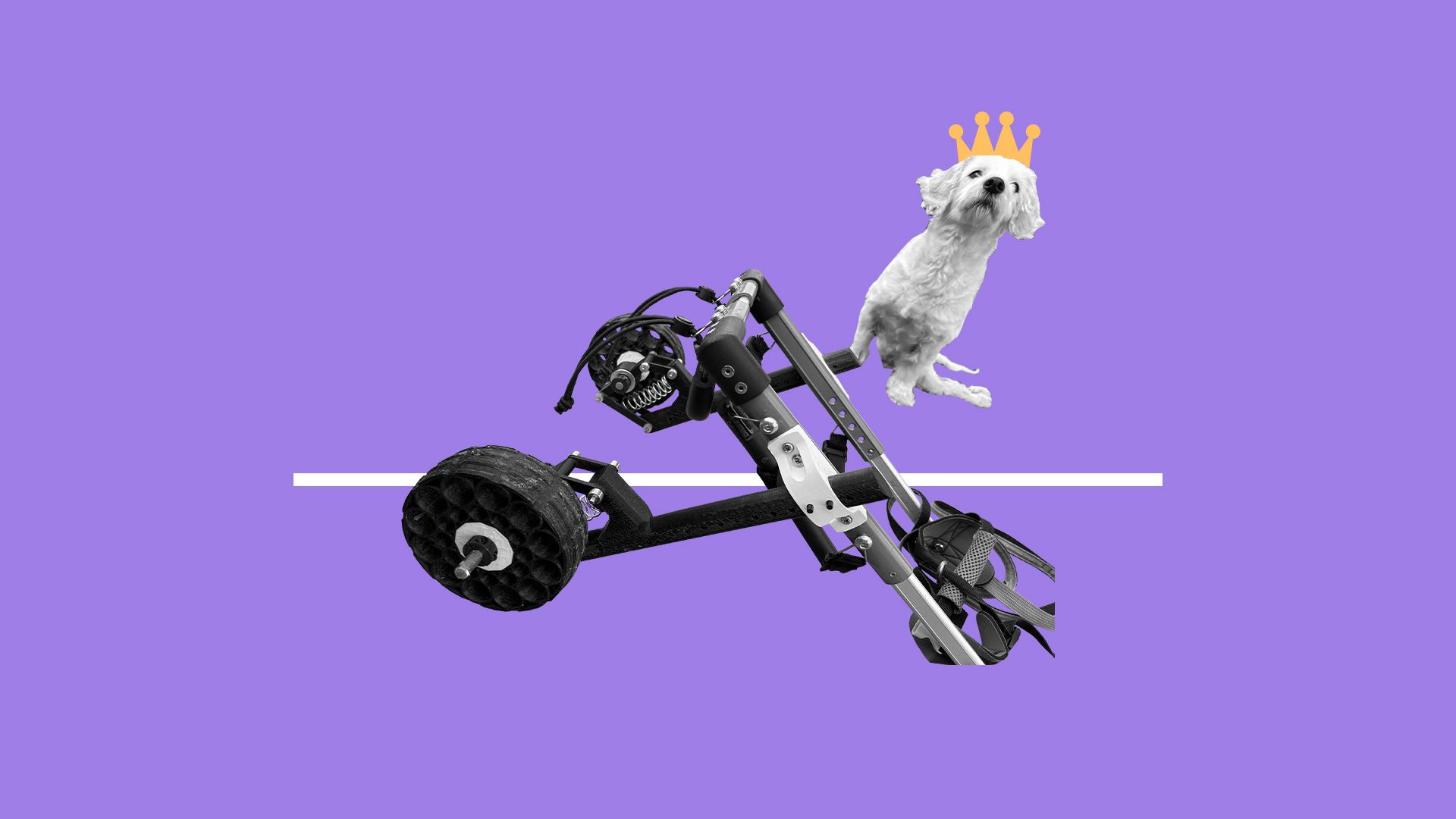
1st July 2023 • Make:able
Speaking of collaboration, we’d like to take a moment to thank the following organisations and people, who have made Make:able what it is today:
- Autodesk for their continued support and sponsorship of the challenge, as well as their dedication to supporting the next generation with professional software tools at no cost.
- All the Make:able partner organisations listed on the challenge homepage, each of whom add unique value and expertise to the challenge and toolkit.
- Our sponsors for supporting the Make:able prize pool with 3D printers, 3D scanners, filament and more.
- The judging panel for their invaluable feedback to determine the winners.
- All Make:able participants for inspiring us with their technical and human-centred skillsets.
- All end users for giving up their time to support participants.
- All the educators and facilitators for providing young people with the opportunity to design meaningful solutions to real-world problems.
And now for the results!
The expert panel of judges have spent the past few weeks reviewing the finalist submission videos on an online voting platform. Each judge was allocated a specific award category and casted votes for a 1st and 2nd place. Once all judges placed their votes, they were counted (2 points for 1st place, 1 point for 2nd place) to reveal the winners.
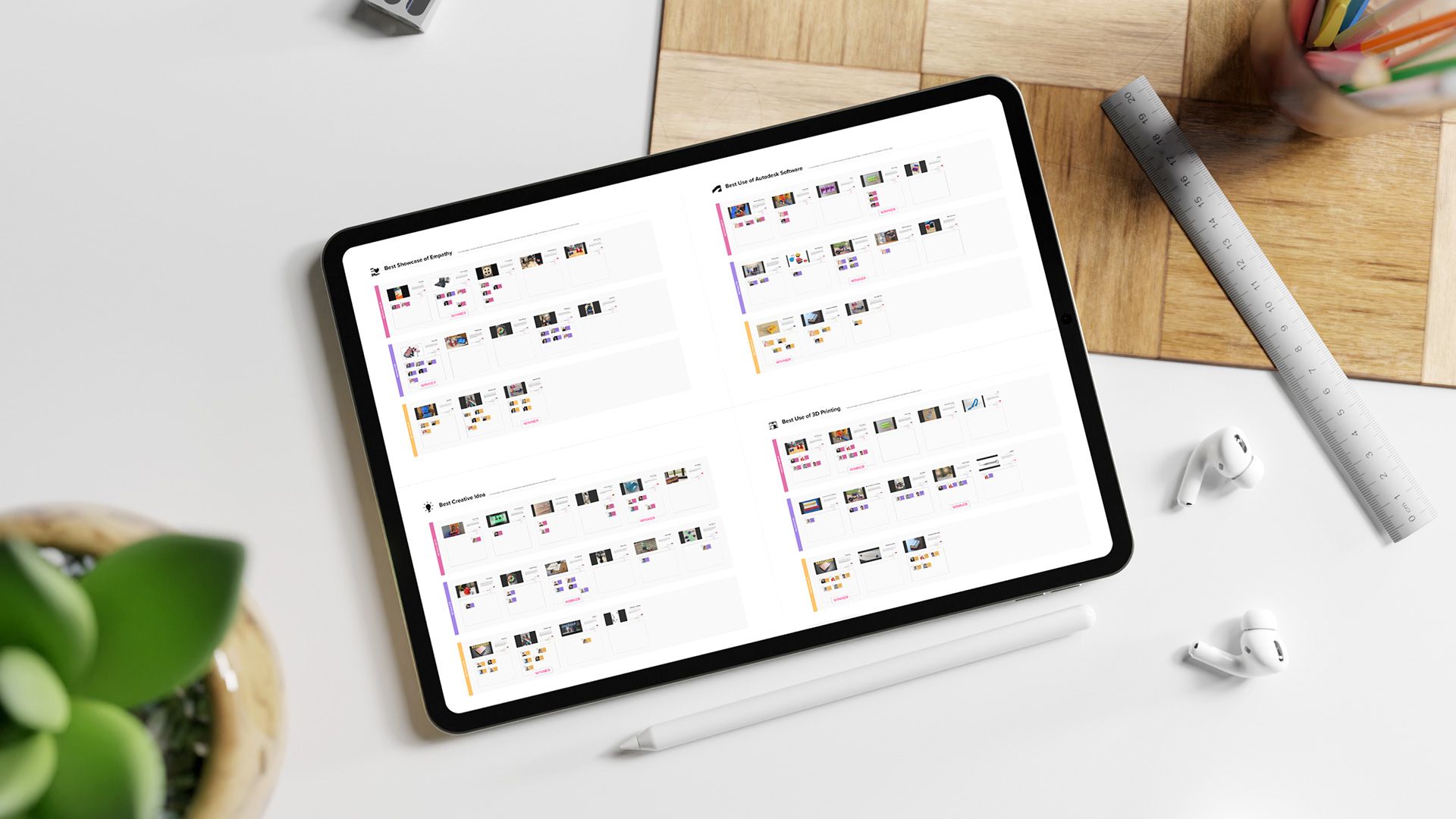
In addition to announcing the winners below, we are also providing you with access to all the finalist video submissions and the votes/comments made by the judges. You can access the judging platform here. We hope you enjoy looking through the content and a huge congratulations to the winners and all participants.
Best Showcase of Empathy (Under 14)
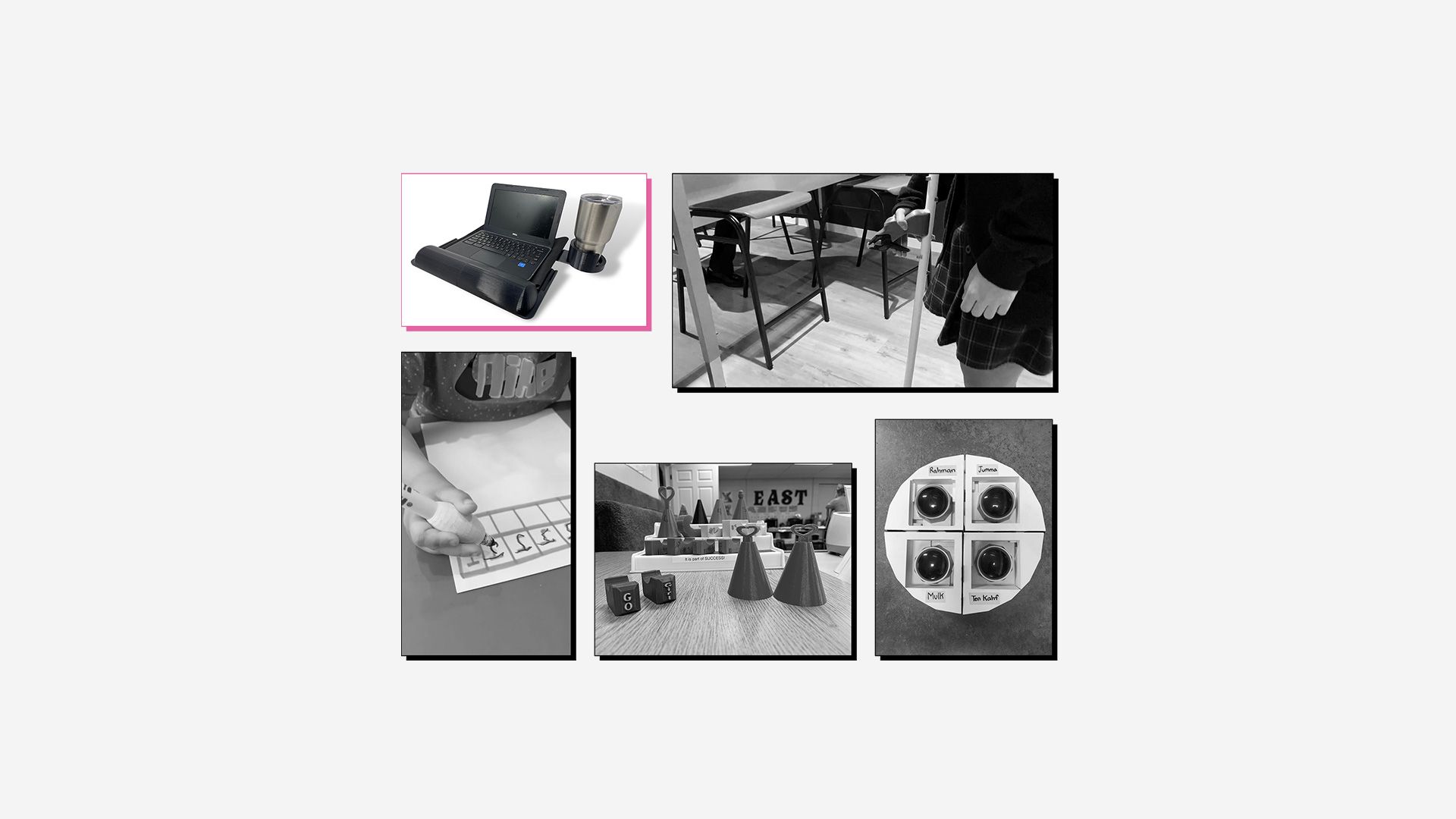
The winners of ‘Best Showcase of Empathy’ for the under 14 age group is Team Christian from Union University Outreach Program (USA), who will receive a Creality Ender 5 Plus 3D printer. Chris, Jonah and Sullivan designed a range of wheelchair tray accessories for Christian, who has muscular dystrophy. The team went above and beyond to include Christian in all stages of the design process. They listened carefully to Christian’s needs and requests, which led to multiple problems being solved.
Best Showcase of Empathy (14-18)
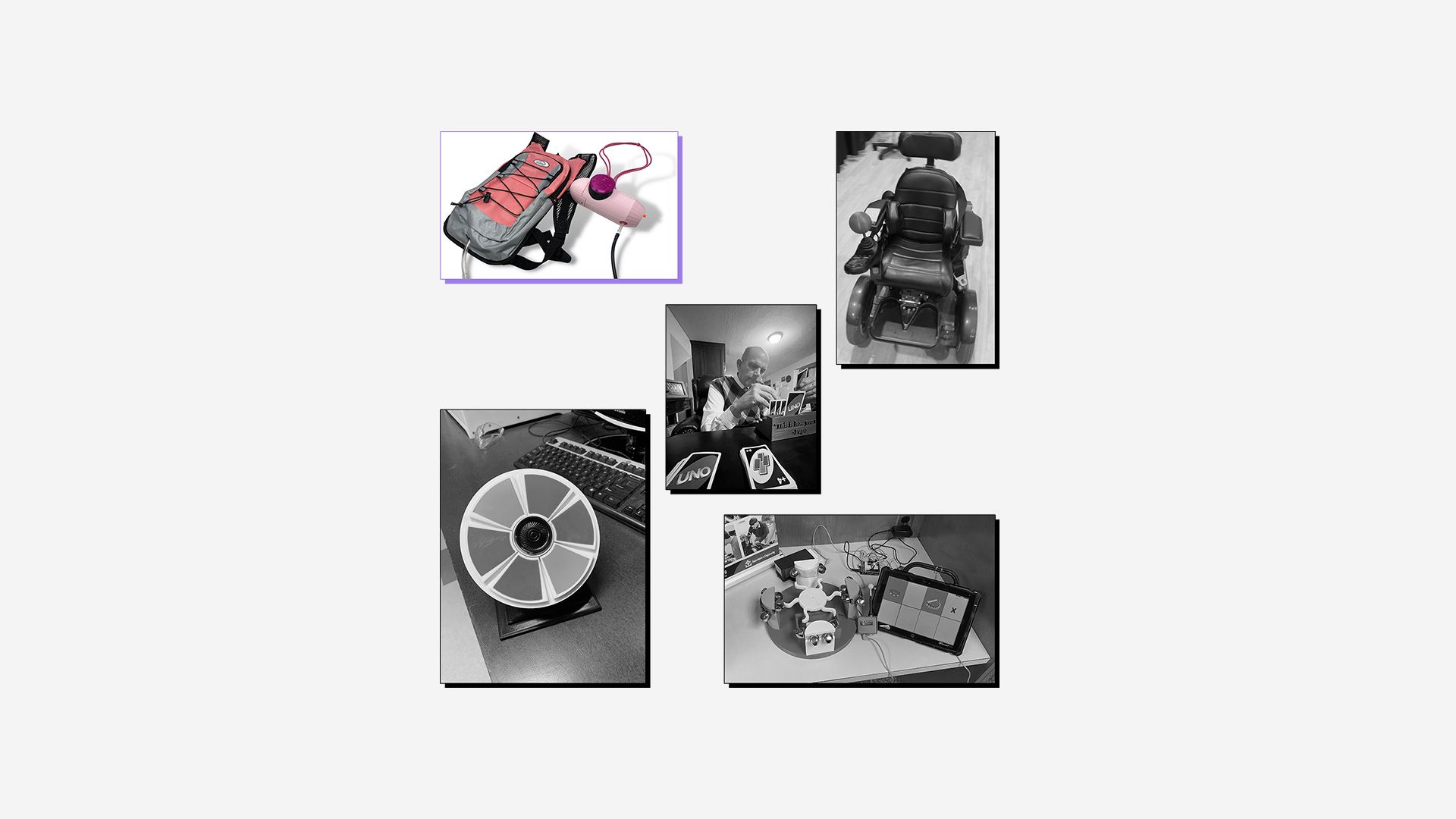
The winners of ‘Best Showcase of Empathy’ for the 14-18 age group is Team Callie from Union University Outreach Program (USA), who will receive a Creality Ender 5 Plus 3D printer. Amelia, Amelia, Ella and Ellie designed a one-of-a-kind water gun for their client Callie, who has arthrogryposis. The team paid careful attention to Callie’s range of motion and came up with a solution that would allow her to be top dog at her family’s annual water gun fight!
Best Showcase of Empathy (Over 18)
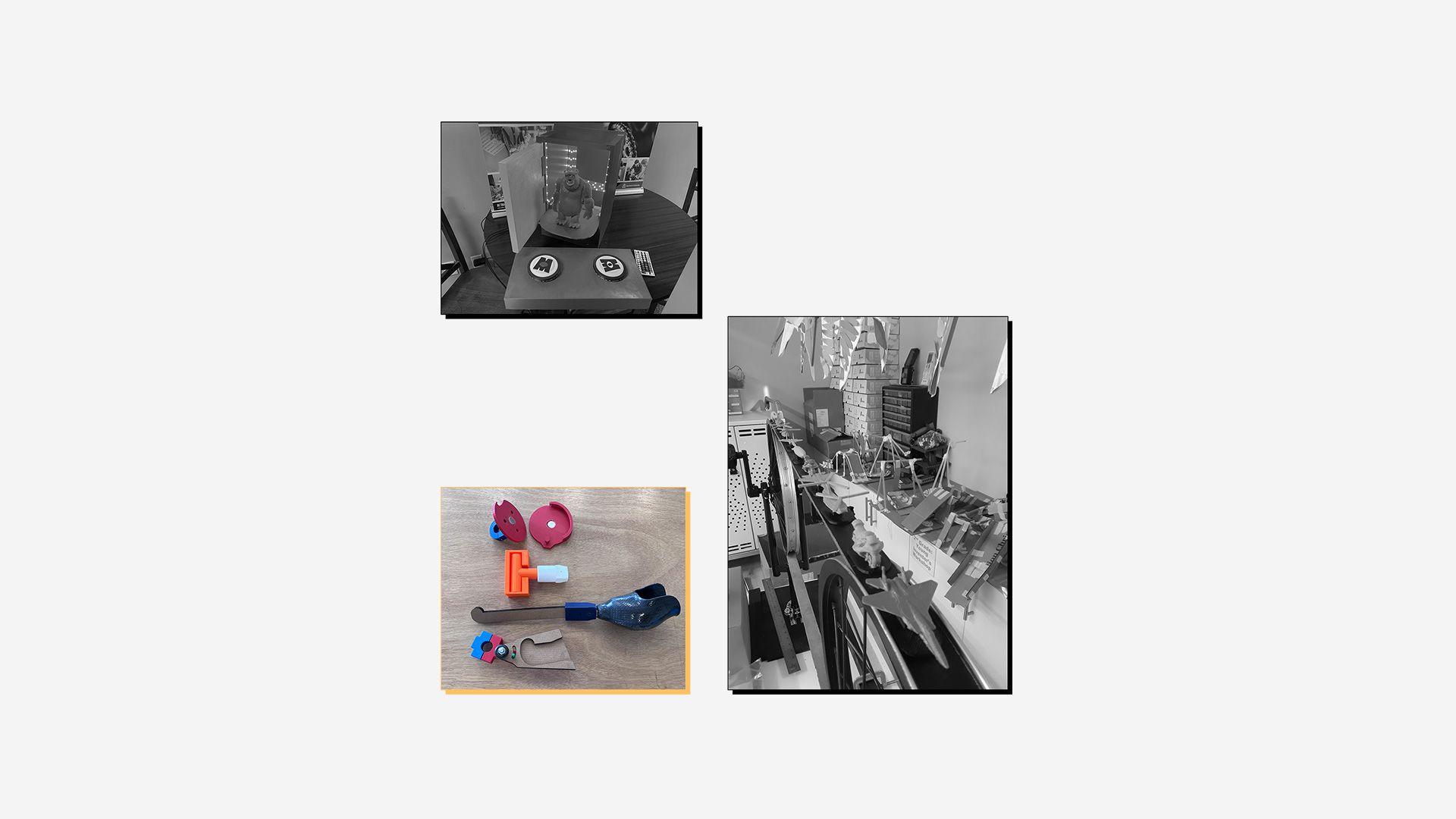
The winners of ‘Best Showcase of Empathy’ for the over 18 age group is Team Fab Lab El Paso (USA), who will receive a $500 gift card from Autodesk. The team are designing an assistive bicycle device for paratriathelete Juaisca Rodriguez. Over the course of three days, participants came together at the Lab to contribute ideas and concepts to aid Juaisca in her goal of representing the US in the World Paratriathelon.
Best Creative Idea (Under 14)
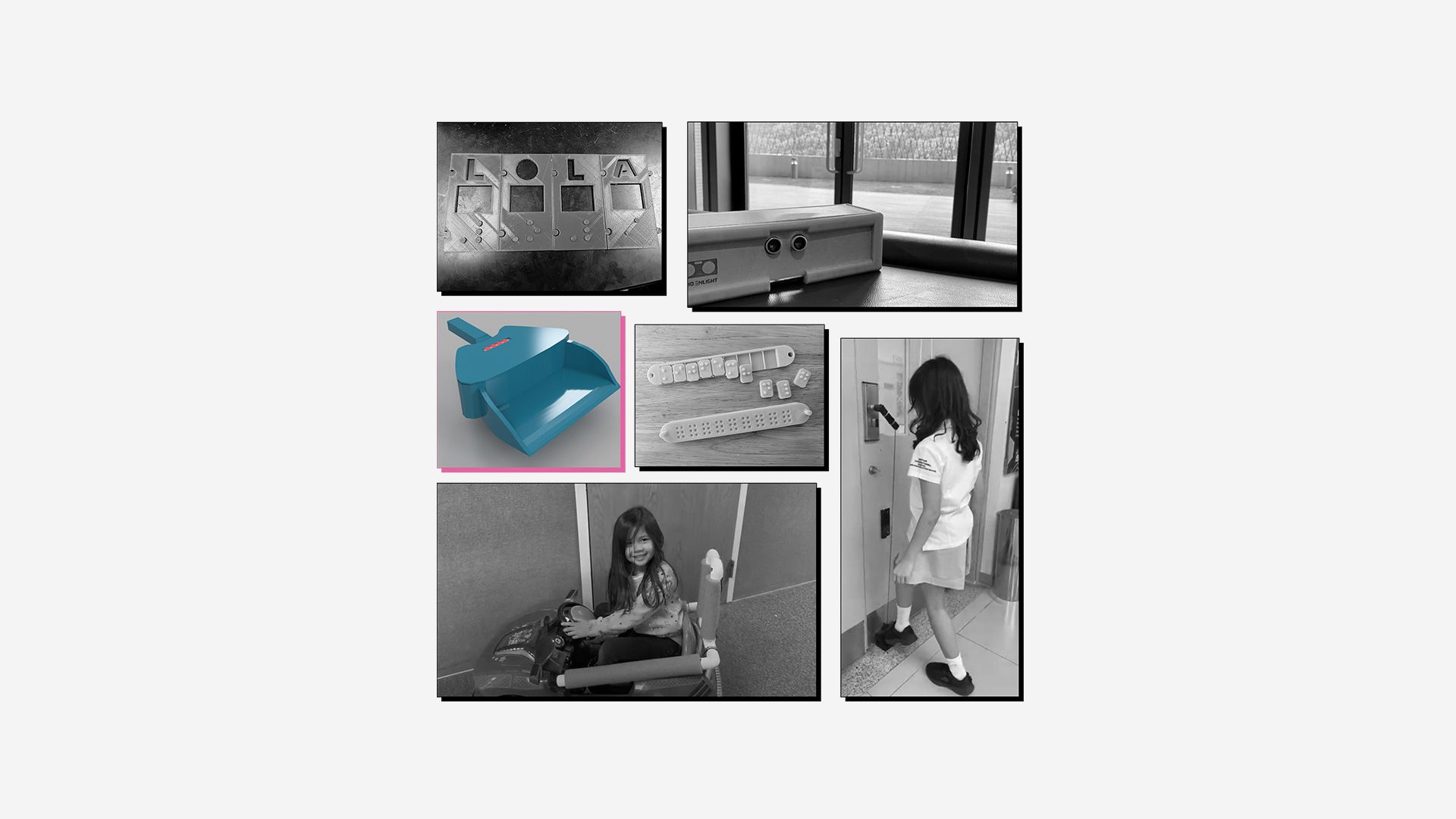
The winners of ‘Best Creative Idea’ for the under 14 age group is Team Envisioneyes from Malvern College (Hong Kong), who will receive an MH Build “The Works!” Filament Bundle from Matterhackers. Reuben, Finlay and Kaden designed a cleaning device for their client, who has visual impairments. The device is an electronic dustpan, which detects dust on surfaces and notifies the user with visual and audio feedback.
Best Creative Idea (14-18)
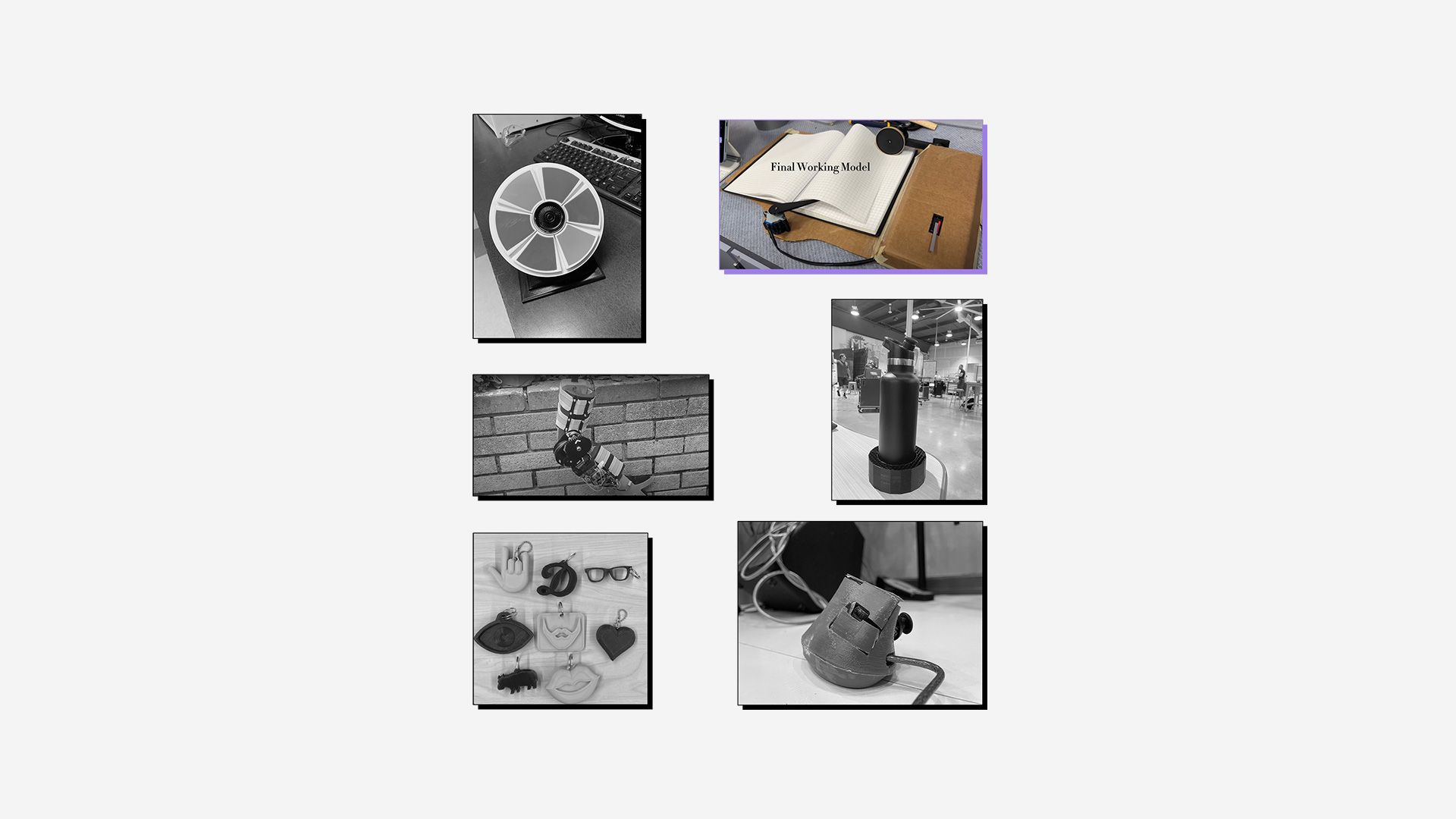
The winners of ‘Best Creative Idea’ for the 14-18 age group is Team Phi Alpha Tau from Diamond Bar High School (USA), who will receive an MH Build “The Works!” Filament Bundle from Matterhackers. Eve and Jeff designed a hands-free reading device for their client Joey, who injured his wrist. The device features a motorised gripping wheel and turning stick to automatically flip pages of a book when a button is pressed
Best Creative Idea (Over 18)
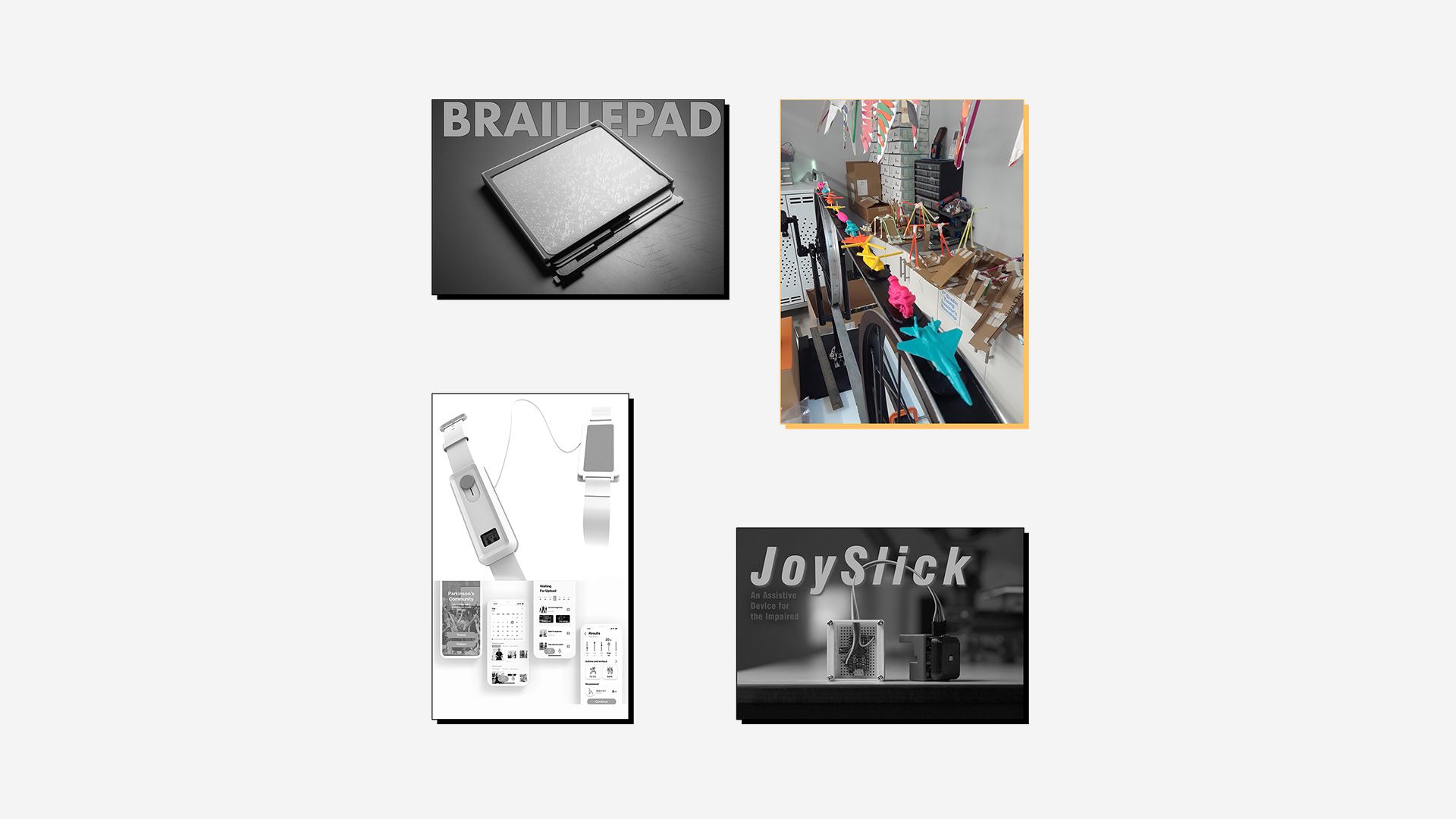
The winners of ‘Best Creative Idea’ for the over 18 age group is Bill Ungar from Riviera Hall Lutheran School (USA), who will receive a $500 gift card from Autodesk. Bill designed a therapy device for his client, Michael. The device is designed to motivate and provide active learning to individuals that use a Brock String and Horizontal Drum due to loss of eye muscle control (i.e. Ataxia).
Best Use of Autodesk Software (Under 14)
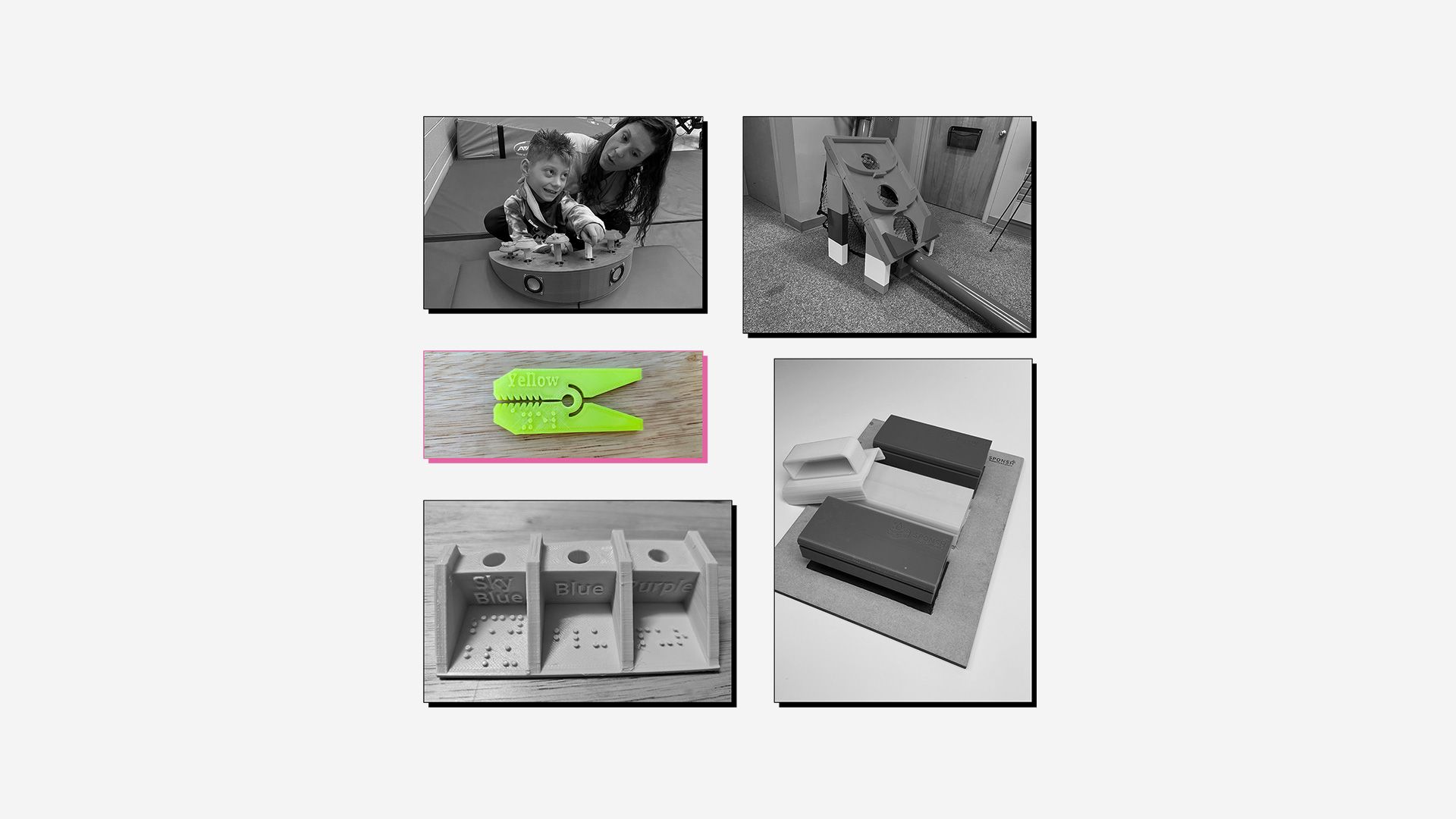
The winners of ‘Best Use of Autodesk Software’ for the under 14 age group is Team Braille Peg from Tech Kid Learning Centre (Malaysia), who will receive an Ultimaker 2 Go 3D printer. Hani designed a braille peg solution to help people with visual impairments to sort and organise their clothes. Multiple iterations were also developed to perfect the mechanism of the design, which needed to be both flexible and strong.
Best Use of Autodesk Software (14-18)
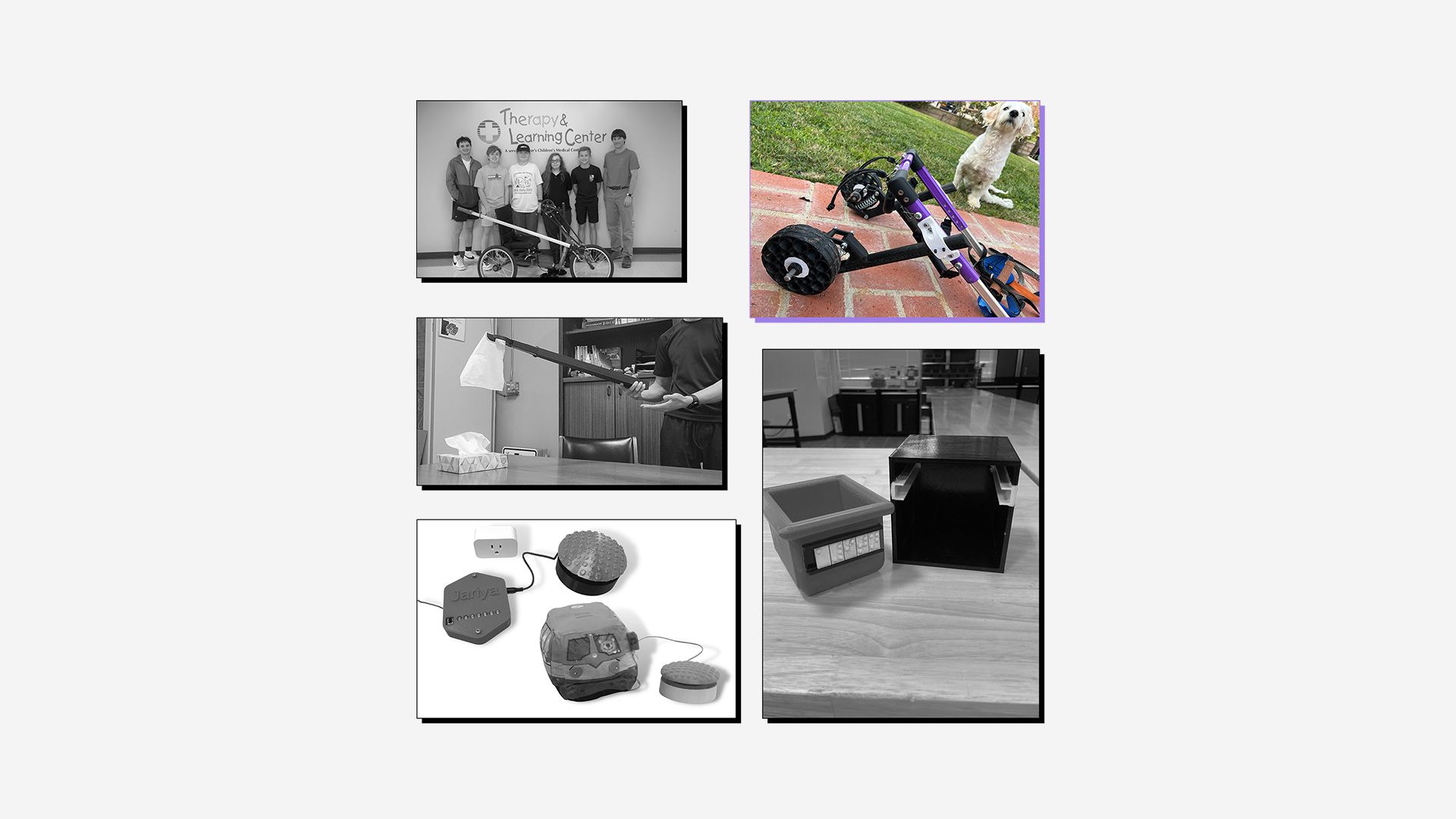
The winners of ‘Best Use of Autodesk Software’ for the 14-18 age group is Team Suspension Pet Addition from Diamond Bar High School (USA), who will receive an Ultimaker 2 Go 3D printer. Kirsten, Akiles and Isaac adapted a dog wheelchair for their client Happy! The design uses compression springs with several support frames made from PLA filament, as well as new kind of wheel made from TPU filament to give the most comfortable ride possible to their furry friend.
Best Use of Autodesk Software (Over 18)
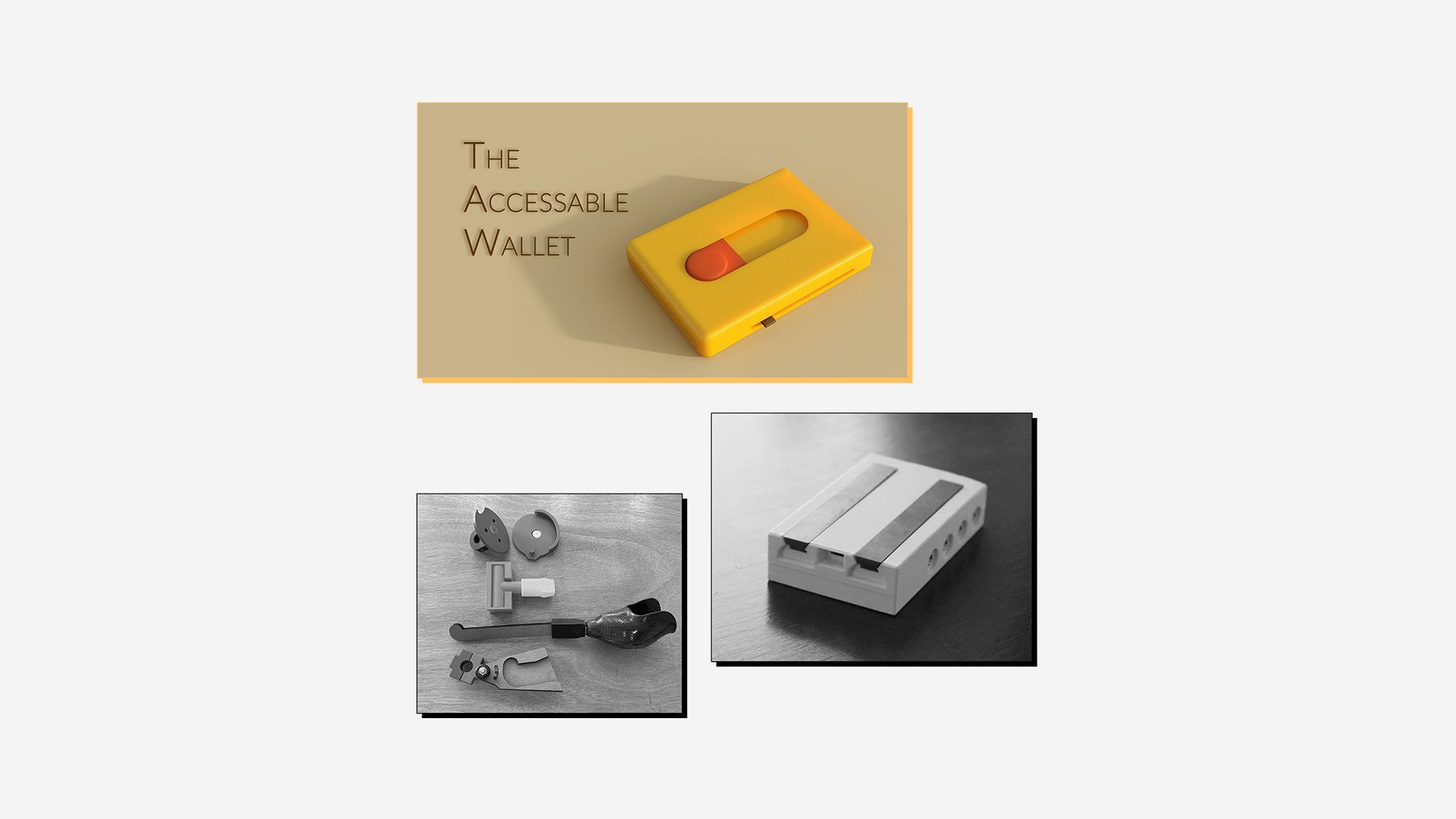
The winners of ‘Best Use of Autodesk Software’ for the over 18 age group is Team Accessible Wallet from The University of Sydney (Australia), who will receive a $500 gift card from Autodesk. Adele, Biyon, Yingzhen, Yohan and Jamie aim to make it easier for people with dexterity issues to take cards out of their wallet by 3D printing mechanisms that simplify the process. Their solution allows each card to be pushed out easily without the need for excessive force or precision.
Best Showcase of Customisation (Under 14)
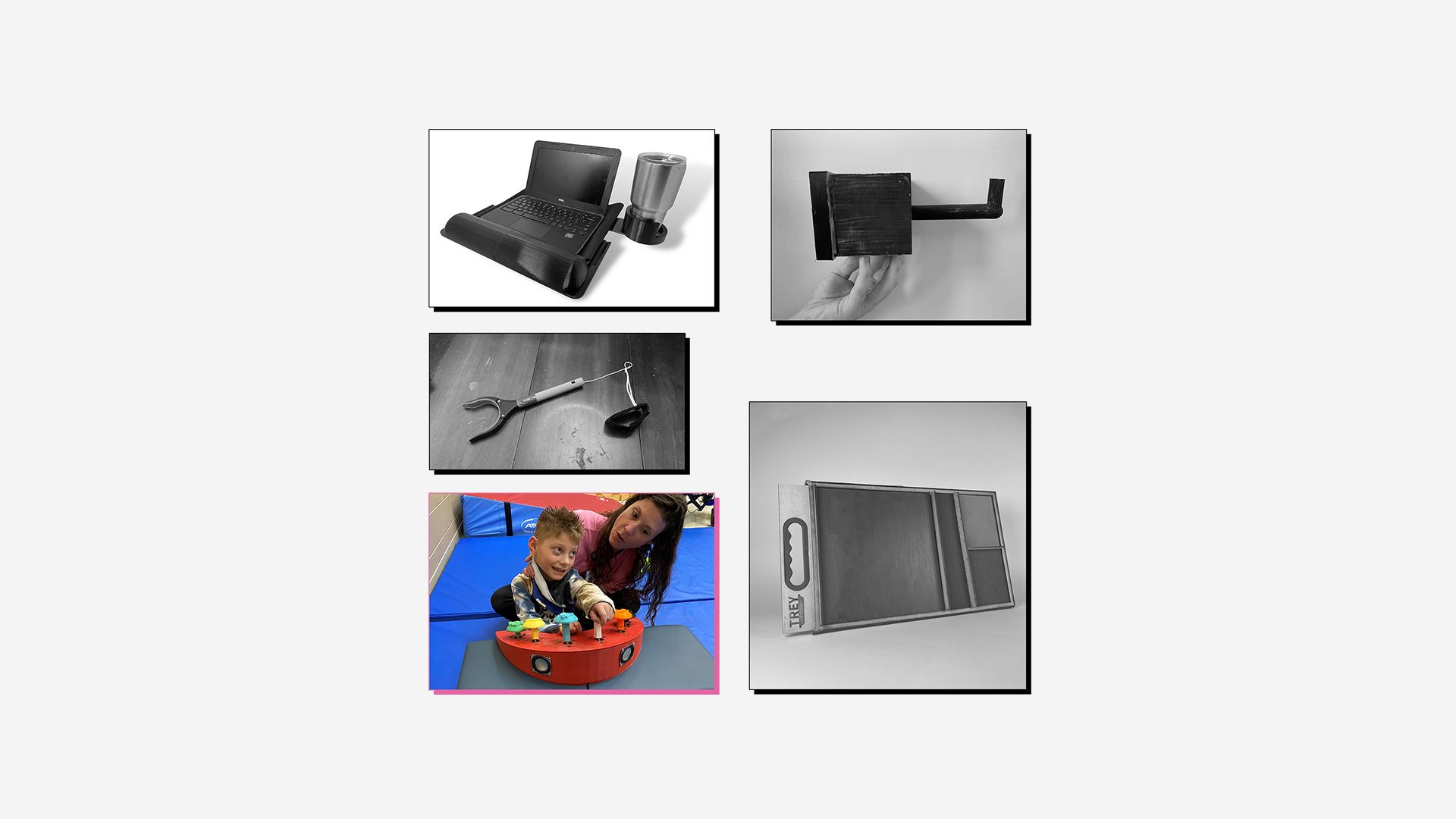
The winners of ‘Best Showcase of Customisation’ for the under 14 age group is Dawson’s Dream Team from Union University Outreach Program (USA), who will receive a Craftbot Plus Pro 3D printer. Dawson is a 6-year-old boy who has hip dysplasia, eye dysplasia and cerebral palsy, which makes it difficult for him to play with many toys. Abby, Cooper, Jackson, Lawson and Nora made him a Disney-themed lap-toy with specially adapted toggles that he can use to make fun sounds.
Best Showcase of Customisation (14-18)
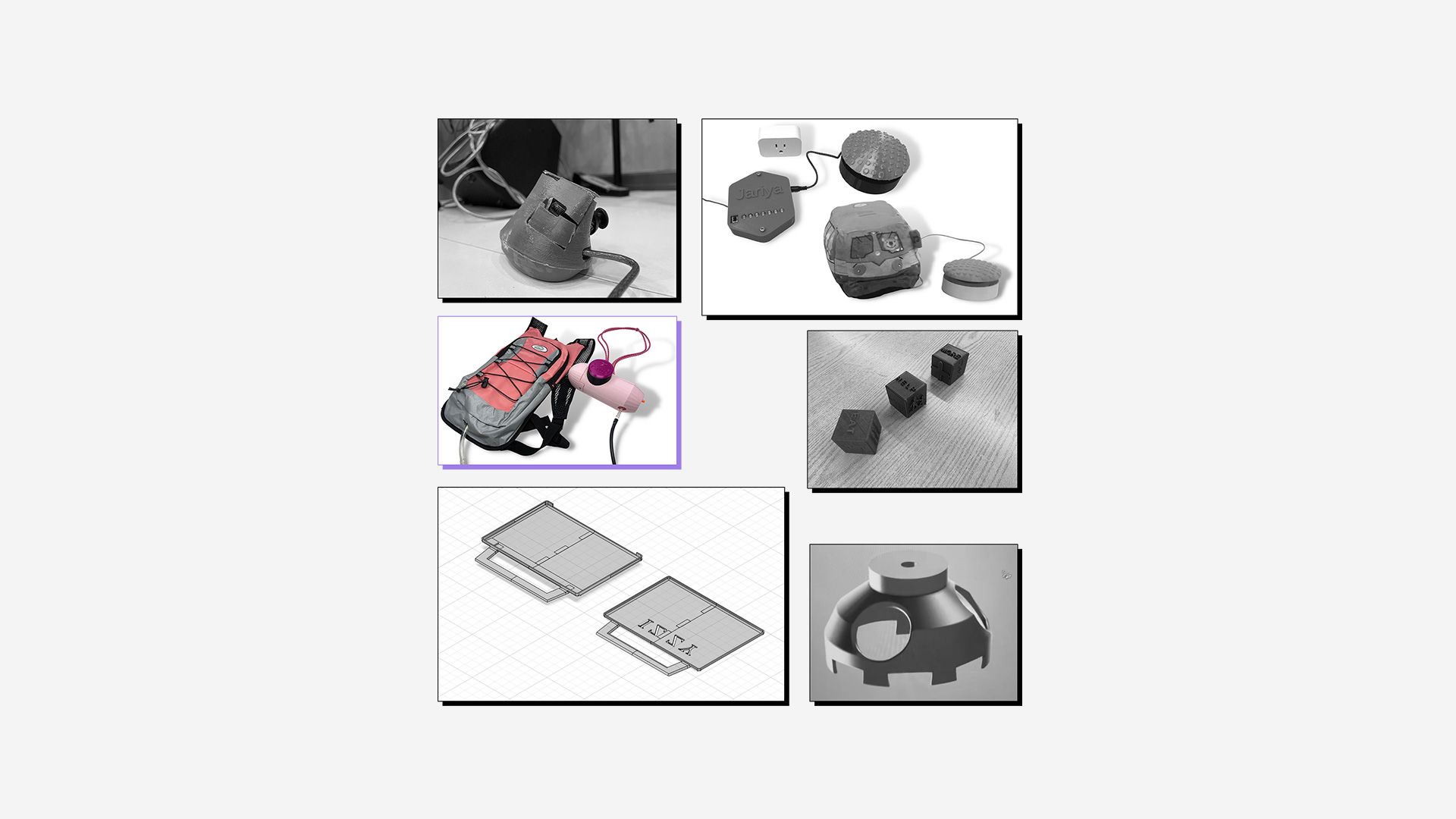
The winners of ‘Best Showcase of Customisation’ for the 14-18 age group is Team Callie from Union University Outreach Program (USA), who will receive an Einstar 3D scanner. Amelia, Amelia, Ella and Ellie designed a one-of-a-kind water gun for their client Callie, who has arthrogryposis. The team paid careful attention to Callie’s range of motion and came up with a solution that would allow her to be top dog at her family’s annual water gun fight!
Best Showcase of Customisation (Over 18)
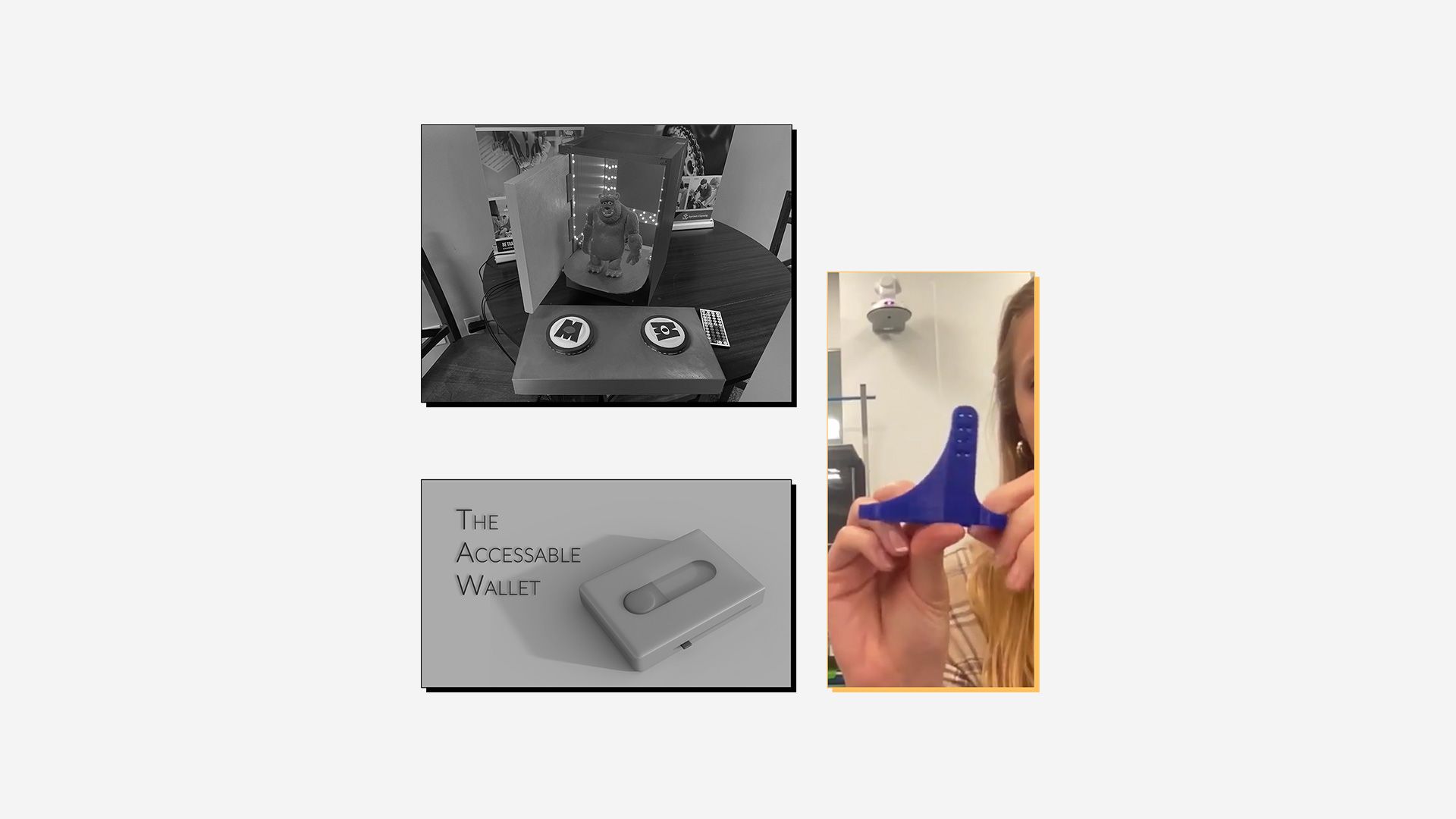
The winners of ‘Best Showcase of Customisation’ for the over 18 age group is Team Widener Spork from Widener University (USA), who will receive a $500 gift card from Autodesk. Emmily, Liliana, Ronald and Aidan designed a feeding utensil for their client, who has a malformed hand. Having identified that universal cuff devices would not work for their client, the team developed a solution that was customised to the specific shape and size of their client’s hand.
Best Use of 3D Printing (Under 14)
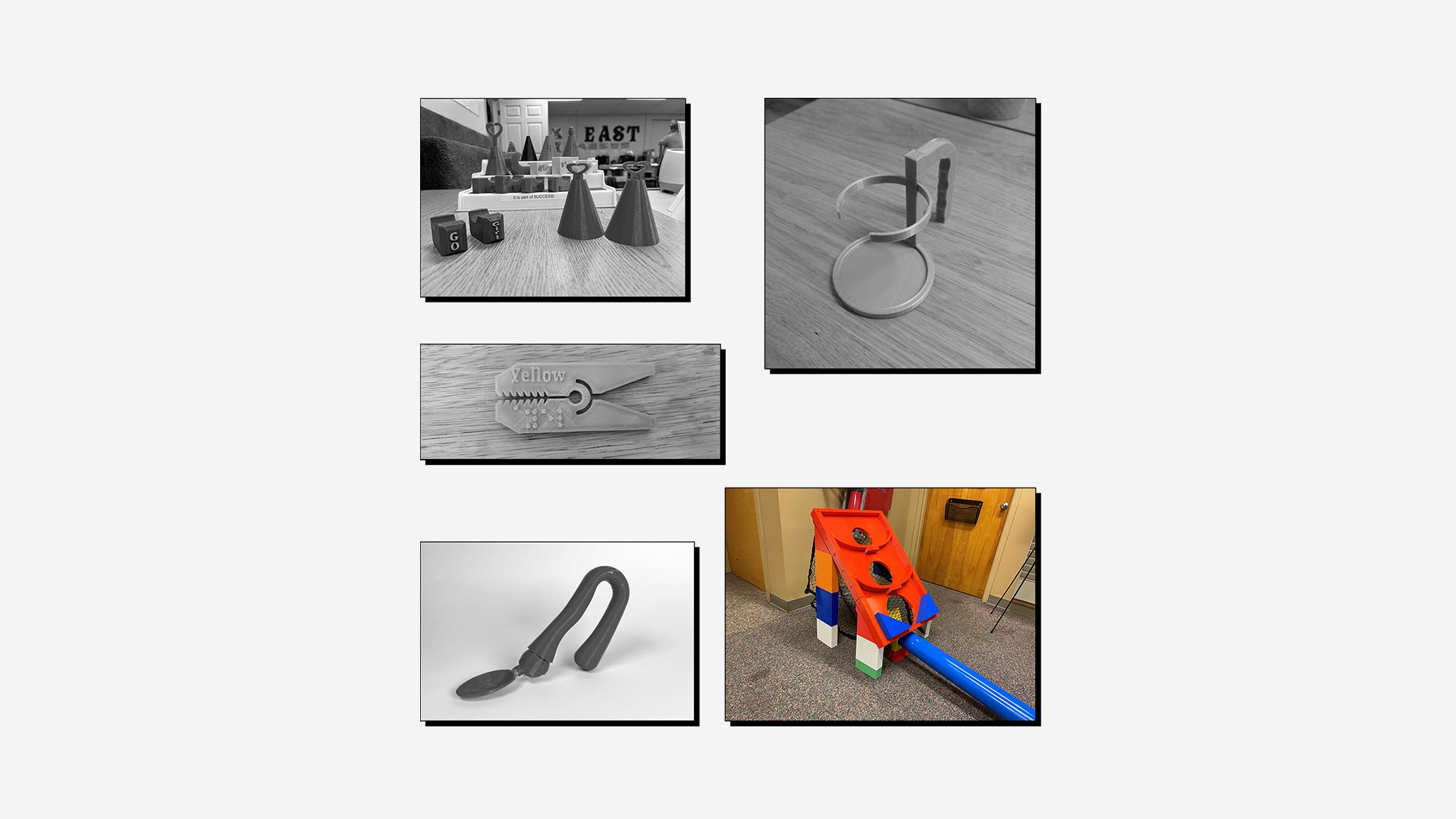
The winners of ‘Best Use of 3D Printing’ for the under 14 age group is Team Button from Union University Outreach Program (USA), who will receive a Original Prusa MINI+ Semi-assembled 3D Printer. Judd is a highly energetic 5-year-old who has cerebral palsy and loves to play with balls. As Judd cannot walk, Harper, Hershell, Liam and Seth designed an arcade ball game for him, which automatically returns the balls back to Judd.
Best Use of 3D Printing (14-18)
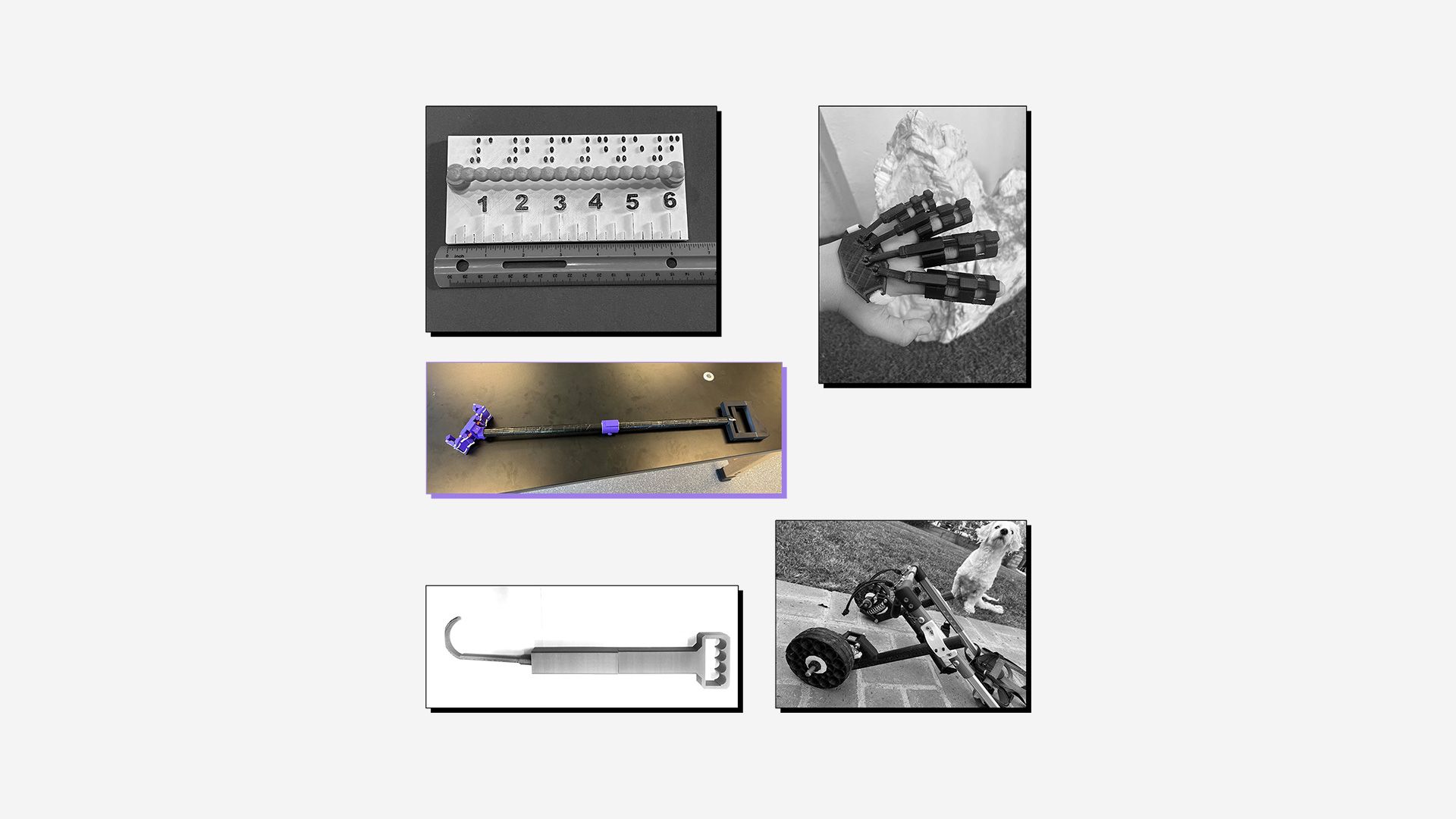
The winners of ‘Best Use of 3D Printing’ for the 14-18 age group is Popster Squad from Casady Upper Division (USA), who will receive a Original Prusa MINI+ Semi-assembled 3D Printer. Ethan, Isabel, Laynie and India designed a foldable arm device for Ethan’s Grandfather, Jerry. The device takes inspiration from hand joints and the team followed Jerry’s requests of having a portable solution by making it compact and foldable.
Best Use of 3D Printing (Over 18)
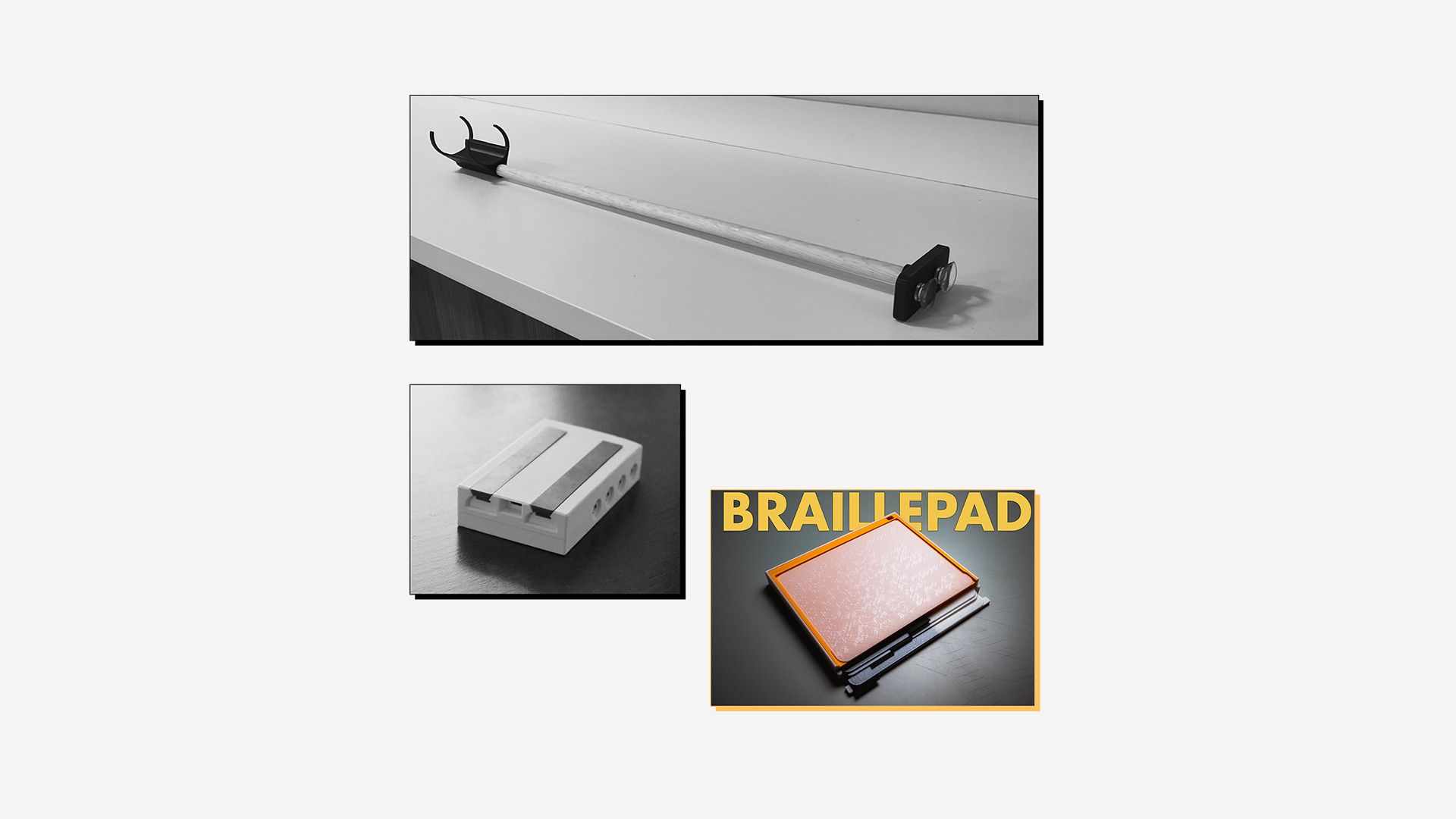
The winners of ‘Best Use of 3D Printing’ for the over 18 age group is Team Visionaries from Taylor’s University (Malaysia), who will receive a $500 gift card from Autodesk. The team created the BraillePad – a 3D printed audible, tablet-like device that addresses the issues of dated manufacturing of Braille books and ineffective learning for the visually impaired.
Best Showcase of Iterative Design (Under 14)
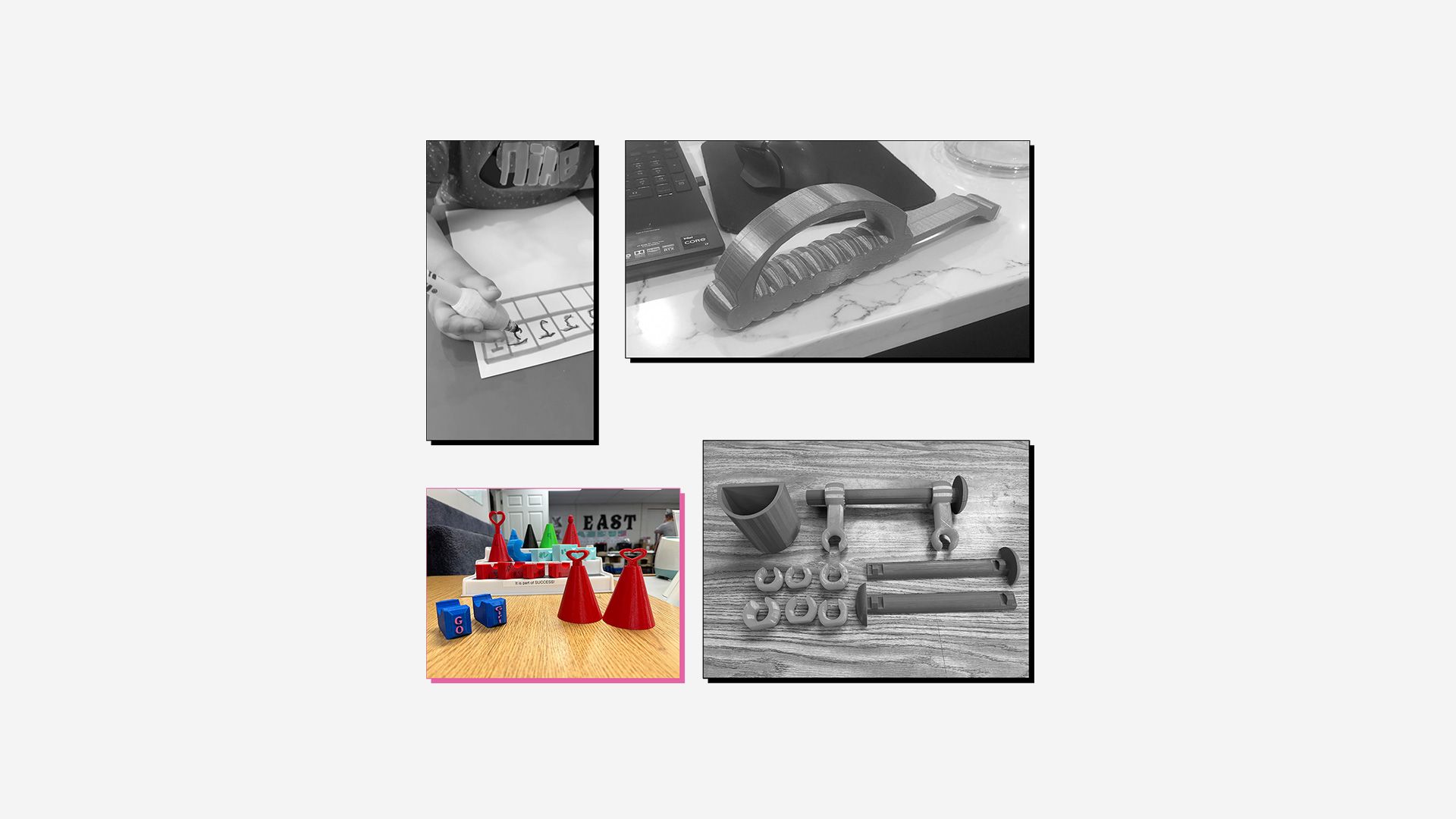
The winners of ‘Best Showcase of Iterative Design’ for the under 14 age group is Team Walk This Way from Westwood Elementary (USA), who will receive a Filamentive Filament Education Bundle. Zane, Abmir, Kaipo and Khloe designed a bracket for their client’s walker, which keeps the seat at a level where she won’t slip down.
Best Showcase of Iterative Design (14-18)
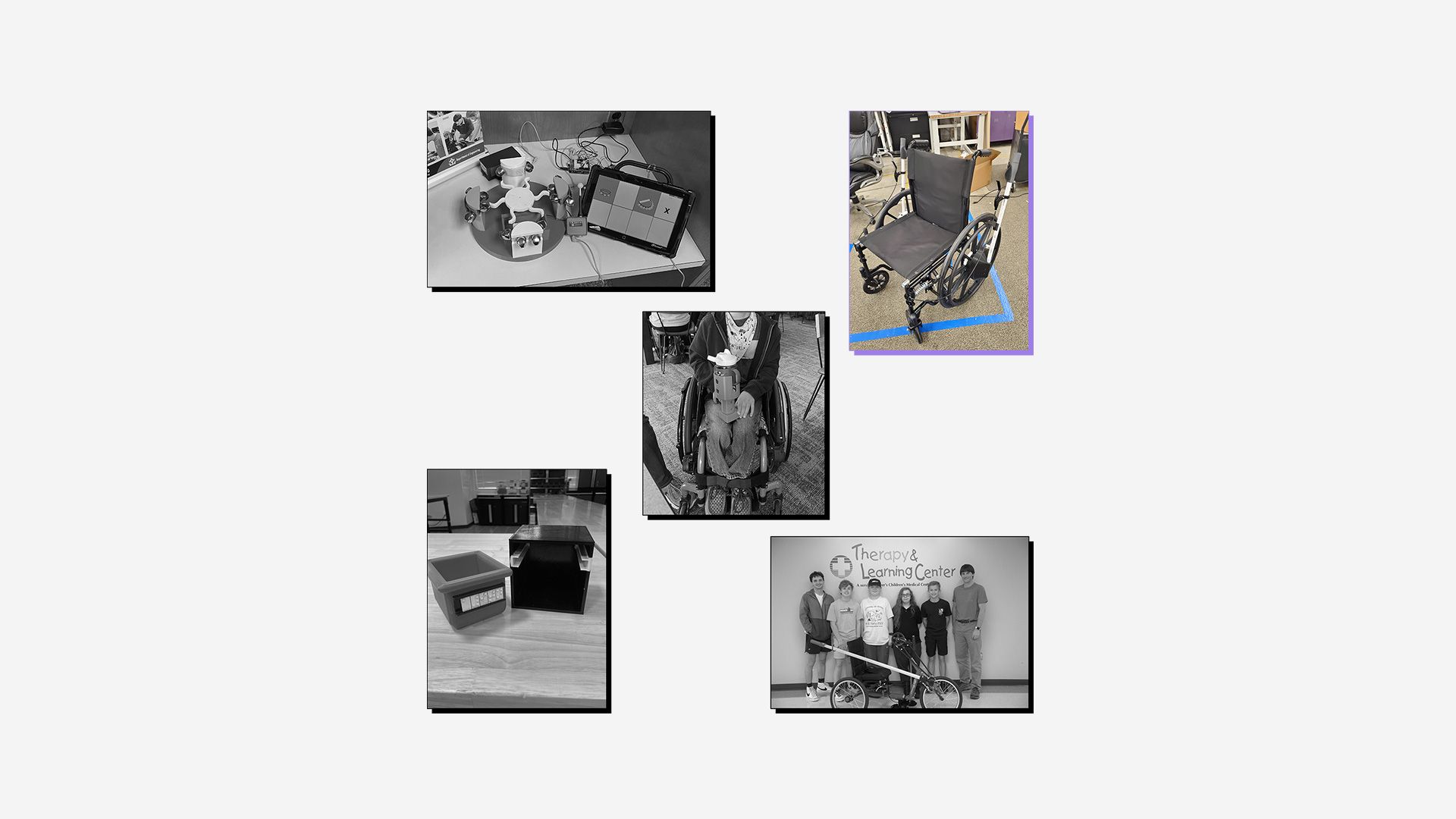
The winners of ‘Best Showcase of Iterative Design’ for the 14-18 age group is Team Upsilon Omicron from Diamond Bar High School (USA), who will receive a Filamentive Filament Education Bundle. Jessica, Jeffrey and Natalie designed a wheelchair lever for their client Peter. The team went through multiple iterations to come up with a gear solution that decreases the amount of force required to propel the wheelchair.
Best Showcase of Iterative Design (Over 18)
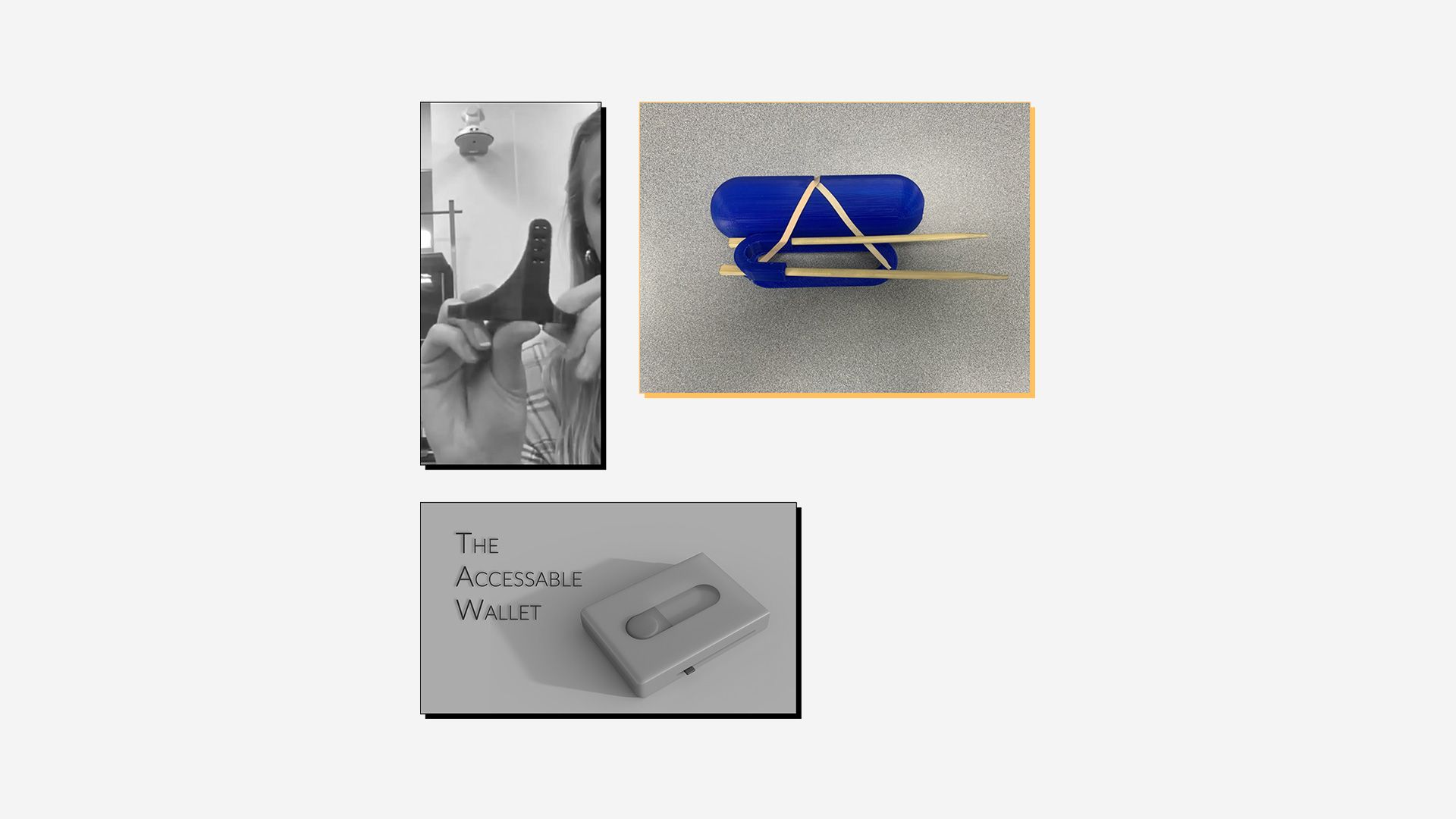
The winners of ‘Best Showcase of Iterative Design’ for the over 18 age group is Team JDT Designs from Widener University (USA), who will receive a $500 gift card from Autodesk. Jamella, Dylan and Tina designed an assistive eating utensil for Tina’s Dad, who has Parkinson’s disease. The team explored multiple designs and iterations – resulting in a final solution that used a universal system that could hold different cutlery pieces.
Join The Make:able Challenge
Looking to be part of the Make:able 2024 Challenge? Head over to the Make:able platform to learn more and sign up for free! **Please note that we will be releasing a challenge toolkit update in November 2023. The majority of the toolkit will remain the same but we will be adding in new resources. If you have any questions about the challenge, feel free to email hello@weareprintlab.com anytime!